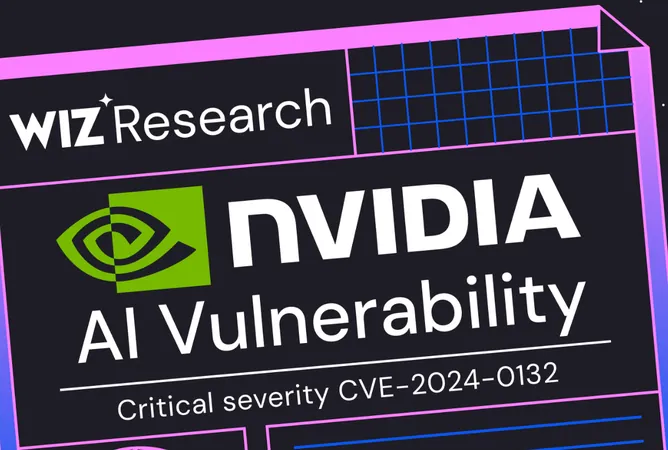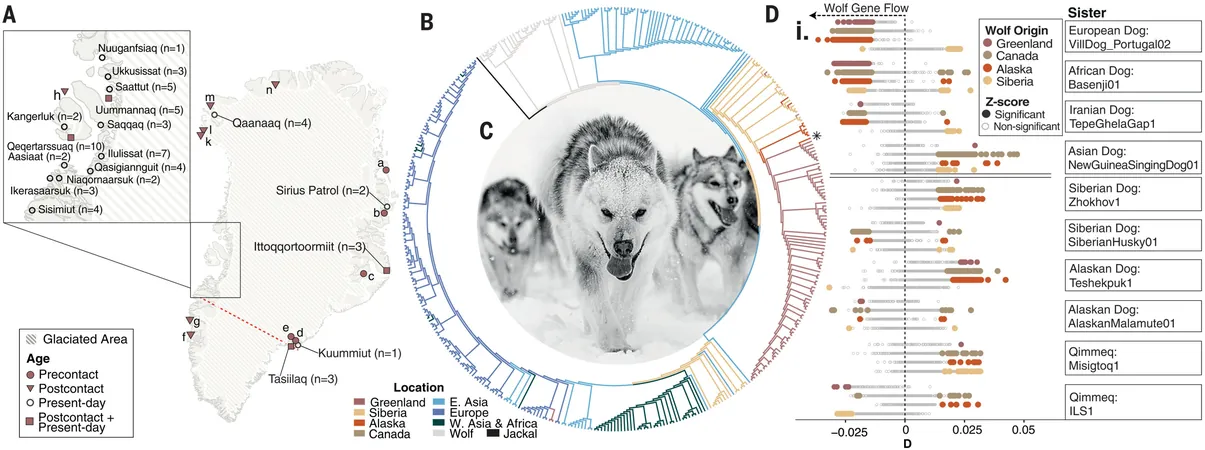
Urgent Warning: Nvidia Vulnerability Threatens 35% of Cloud Environments!
2024-09-30
Author: John Tan
As AI workloads surge, so does the reliance on Nvidia's powerful chips. However, a newly discovered vulnerability in Nvidia's Container Toolkit is putting a staggering 35% of cloud environments at serious risk. Let's delve into what this means for your organization and how to protect your assets.
The Threat Unveiled: Container Escape
Exploiting CVE-2024-0132 requires first gaining control of a container image, which means additional attack strategies are needed to pose a significant threat. Once successfully exploited, attackers can execute a "container escape," granting them access to the host system and potentially wreaking havoc on sensitive data and infrastructure.
Attackers might employ various methods to introduce a malicious container image into an organization's IT stack. This could involve tricking an unsuspecting user into downloading a compromised image, allowing remote takeover of the system. Once they gain control, attackers can exfiltrate valuable data or conduct lateral movements throughout the organization’s IT framework.
In the case of cloud environments, uploading an image may be as simple as having the right permissions. Furthermore, shared platforms like Kubernetes could be fertile ground for hackers looking to exploit the Nvidia Container Toolkit.
Immediate Action Needed!
While Wiz Research isn't releasing all specifics about the potential attack methods just yet, they have confirmed that a patch (version 1.16.2) is currently available. The researchers are urging organizations to implement this update swiftly to safeguard their systems before revealing the complete technical details.
Nvidia has responded proactively by issuing a security bulletin and pledging cooperation with Wiz Research. Now, it’s crucial for organizations to take matters into their own hands to mitigate the risks. Specifically, virtual machines (VMs) that utilize Nvidia GPUs through the Container Toolkit, especially those using images from untrusted sources, are particularly vulnerable.
What’s Next?
Organizations must prioritize addressing this vulnerability to avoid becoming the next victim of a cyberattack. Implementing stringent security practices, monitoring for unusual activity, and ensuring that all container images originate from trusted sources is more critical than ever. Failure to act could open the floodgates to cybercriminals eager to exploit this significant security hole.
Stay tuned as we continue to monitor this evolving threat landscape and provide updates on emerging vulnerabilities that could affect the future of cloud computing!




 Brasil (PT)
Brasil (PT)
 Canada (EN)
Canada (EN)
 Chile (ES)
Chile (ES)
 Česko (CS)
Česko (CS)
 대한민국 (KO)
대한민국 (KO)
 España (ES)
España (ES)
 France (FR)
France (FR)
 Hong Kong (EN)
Hong Kong (EN)
 Italia (IT)
Italia (IT)
 日本 (JA)
日本 (JA)
 Magyarország (HU)
Magyarország (HU)
 Norge (NO)
Norge (NO)
 Polska (PL)
Polska (PL)
 Schweiz (DE)
Schweiz (DE)
 Singapore (EN)
Singapore (EN)
 Sverige (SV)
Sverige (SV)
 Suomi (FI)
Suomi (FI)
 Türkiye (TR)
Türkiye (TR)
 الإمارات العربية المتحدة (AR)
الإمارات العربية المتحدة (AR)